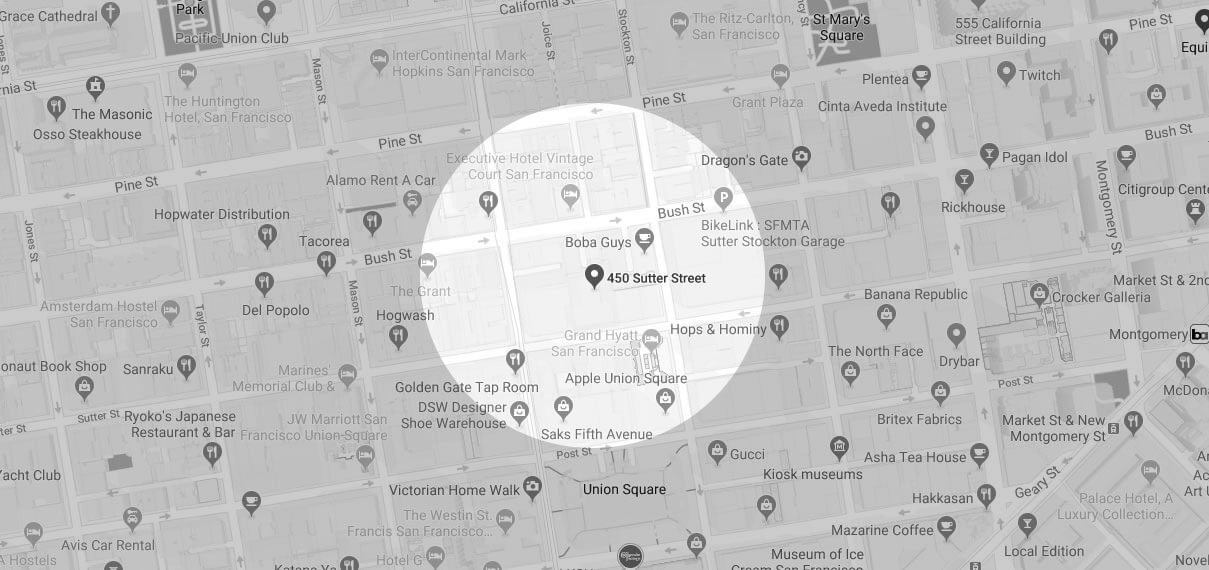Invisalign® Procedure
As the demand for aesthetic dentistry is increasing, many people seek ways to replace fixed orthodontic appliances with removable ones. Invisalign clear aligners are an esthetic and hassle-free option for orthodontic treatment and have gained massive popularity over the last decade. This article will highlight the increasing popularity of Invisalign aligners by describing their procedure, scope, limitations, efficacy, and stability of results.
What is The Invisalign Procedure
An increase in adult orthodontic patients has caused an increased demand for a relatively comfortable and esthetic substitute for fixed dental appliances. Invisalign clear aligners that fulfill this demand are also predisposed to rapid technological improvements in aligner materials and procedural techniques.
Invisalign clear aligners are suitable for patients with the following conditions:
- Overbite
- Underbite
- Open bite
- Crossbite
- Gapped teeth
- Crowded teeth
- Crooked teeth
- Misaligned teeth
- Relapsed past orthodontics
Not everyone is a suitable candidate for Invisalign. Many people with severe malocclusion or impacted or missing teeth should seek an alternative treatment like metal braces. It sheds light on the importance of the first consultation.
If you are a new patient, your dentist will likely gather your medical and dental records in the first consultation. Then they will evaluate your smile comprehensively. The procedure may envelop some or all of the following steps:
X-rays
Dental X-rays allow dentists to know the current state of your jawbone and teeth roots. It might include panoramic, full-mouth, or cephalometric images.
Bite Registration
The dentist takes an impression of your upper and lower teeth in the bite position to get help in making Invisalign trays and retainers.
Dental Impressions
These are the engraved impressions of your teeth, gums, and surrounding dental structures. They are used to make diagnostic models and restorative apparatus for your mouth, like aligner trays, retainers, veneers, mouthguards, dentures, implants, etc. The dentist fills a small plastic or metal tray with a putty-like material during this procedure. Your teeth are dipped into this material. After some time, it sets, hardens, and is removed from your mouth. These impressions are sent to the laboratory. In the laboratory, the impressions are filled with cement to create a cast of your teeth. This stage and the bite registration are mostly done digital with an intraoral scanner. Please look under the 3D digital scan.
Photographs
Along with the impressions, photographs of your mouth are also needed to study your case and to be sent to the laboratory.
3D Digital Scan
It is a 3D scan of the patient's mouth and facial expressions regarding how they smile or talk. It enables dentists to provide you with a 3D model of your future smile. The Intraoral scanner is a camera which takes many pictures and by stitching them together, makes a 3D model.
Why Choose Invisalign
Invisalign®, the best-known aligner system, has become a generic name for other first-rate systems using CAD-CAM (Computer-Aided Designing, Computer-Aided Manufacturing) technology. This system is known to be the most sophisticated and commonly used aligner technology.
Fixed appliances and metal braces make plaque control difficult and adversely affect periodontal tissues, making orthodontic treatment a risk factor for periodontal diseases. Using Invisalign facilitates oral hygiene, thus improving the periodontal status and reducing plaque levels, bleeding upon probing, gingival inflammation, and pocket depth.
Time efficiency is another important outcome of Invisalign aligners. It is primarily a beneficial aspect of Invisalign for private practice orthodontists as they spend less time with each patient hence treating more patients in a given time. Early treatment completion pleases patients too. Total treatment time on a dental chair for Invisalign patients is found to be 67% lesser than that for patients getting conventional fixed braces.
Conventional fixed braces carry the risk of inevitable orthodontic emergencies, for example, broken brackets. With Invisalign, the risk of orthodontic emergencies is reduced manifold. The risk can be reduced even further by following your orthodontist's instructions. Invisalign is strong and carries minimal risk of breakage, reducing emergency visits to orthodontists.
Invisalign subtly fits your lifestyle choices. You don't need to compromise on the foods you have a weakness for or your favorite sports. These removable clear aligners let you enjoy the pre-procedural time while treating orthodontic issues simultaneously.
The Invisalign Solution
Invisalign is a game-changer in dental aesthetics. It has attracted over 5 million people across the globe. Commonly, people consider that Invisalign is considered only for aesthetic reasons. That's not true. Indeed, many more orthodontic problems are addressed by Invisalign, with improved aesthetics being a perk of the treatment.
The following issues can be treated by Invisalign:
Crooked teeth
Crookedness in teeth occurs for multiple reasons. Sometimes, people's mouths are too small for their teeth, causing overlapping, crookedness, and twisting of teeth. On some other occasions, thumb sucking, genetics, traumatic injury, or improper fitting of dental restorations make the teeth crooked. Whatever the reason, Invisalign can correct the issue to a great extent.
Overbite
Sometimes crookedness of teeth leads to an overbite. An overbite is a condition when the upper teeth jut out in front of the bottom teeth. It makes chewing or biting some foods challenging. Invisalign repositions teeth so that upper and lower teeth align precisely on top of each other.
Underbite
An underbite occurs when the bottom teeth are in front of the upper teeth. It causes rapid wear and tear in teeth and speaking difficulty. Invisalign pushes lower teeth back to their natural position. In some extreme cases, Invisalign can be used in conjunction with metal braces when Invisalign alone can't address the issue.
Crossbite
It is a dental condition when a few upper teeth sit inside lower teeth. It causes excessive wear and tear in teeth and gum recession. Invisalign repositions the malpositioned teeth to their ideal position.
Gapped teeth
Significant gaps between teeth cause food to trap between them, making oral hygiene an ordeal and causing infections and gum diseases. Invisalign pushes teeth closer to one another to close the gaps between teeth. Teeth look aesthetically pleasing, and orthodontic diseases' potential risk is minimized. However, there is a constraint on how much gap to be minimized.
Open bite
open bite is a dental condition when the upper and lower teeth don't meet upon closing the mouth. Invisalign moves teeth such that they close perfectly on top of each other.
Crowded teeth
When the mouth is too small to accommodate all the teeth, teeth start growing in a random pattern. They overlap, crook, or twist, making brushing or flossing difficult and causing tartar buildup, leading to oral diseases. Invisalign can counteract the problem. However, the ideality of the results depends on the complexity of the condition.
Is Invisalign Procedure Right for You?
Many adults don't want a metal-mouthed smile. But not everyone is an ideal candidate. Outlined below are a few factors that govern your candidacy for Invisalign treatment.
You are responsible enough
One reason why Invisalign treatment starts from a specific age group is you need to maintain discipline with the treatment. They are removable, and you can take them off whenever you want, but it doesn't disregard the importance of wearing them for more than 22 hours a day. You must commit to wearing them all the time except when you are eating.
Many people who are habitual of losing important things are not likely to progress far with Invisalign. If you lose things easily or are not committed to changing your teeth, Invisalign is probably not for you.
You've got good oral hygiene
Before considering Invisalign, you must have good oral health and take care of your aligners, so they don't cause future problems.. Again things rely on your responsibility and consciousness. You must clean your trays regularly and take good care of them. Otherwise, replacing trays might cost you good fortune.
If your mouth is free from periodontal diseases and you are good at maintaining oral hygiene, then your dentist would consider Invisalign treatment.
You don't smoke
If you smoke and are planning on getting Invisalign, now is the best time to quit. Smoking isn't only dangerous for health but also tampers with the material of your clear aligners. Smoking makes the trays dirty, and if you remove them before smoking, your treatment won't be as effective as it should be because you are not wearing them enough.
Your case is straightforward
You are an ideal candidate for Invisalign if your case is uncomplicated. For example, you have an overbite, underbite, crossbite, open bite, or slightly gapped or crooked teeth. For more complex cases, Invisalign doesn't work. In that case, your orthodontist might consider corrective measures and alternative treatment to address the problem. This is the reason for your initial consult appointment with Dr Rordirguez.
You have grown all your permanent teeth
Doctors consider Invisalign treatment when all your primary teeth have fallen, and adult teeth have grown fully. It is necessary because a dentist cannot predict how your permanent teeth will grow after the baby teeth. There is no upper age limit to getting Invisalign treatment, but dentists are not very keen to treat kids with Invisalign.
If you meet the criteria mentioned above, Invisalign treatment is right for you.
Conclusion
Invisalign aligners provide an esthetically appealing and comfortable treatment experience, ameliorate oral hygiene, cause less pain compared to fixed orthodontic appliances, reduce the number and duration of dentist visits, and require infrequent emergency visits. The intervention of digital technology in dentistry has revolutionized the practice and appliances used.
Not to mention, Invisalign offers multiple aesthetic benefits. Besides its aesthetic advantages, it treats mild to moderate oral disfigurements like bite issues and malalignment with the same efficacy as conventional fixed braces. However, the expenditure in production, reliance on patient cooperation, and the inability to treat a few specific malocclusions confine the usage of Invisalign.
About My Dentist San Francisco
My Dentist San Francisco is a leading dental clinic in San Francisco, CA, United States. We offer a wide range of dentistry services from preventive care to advanced restorative treatment and cosmetic smile makeovers. We assure to provide a comfortable environment to those who may feel nervous about the idea of receiving dental services. We prioritize providing the highest standards of evidence-based dental care.
Getting orthodontic treatment is nerve-racking. We, at My Dentist San Francisco, are committed to making the process as smooth as possible for our patients. If you think Invisalign is right for you, get in touch with our expert orthodontists to ensure you get the best treatment and the most beautiful smile.




